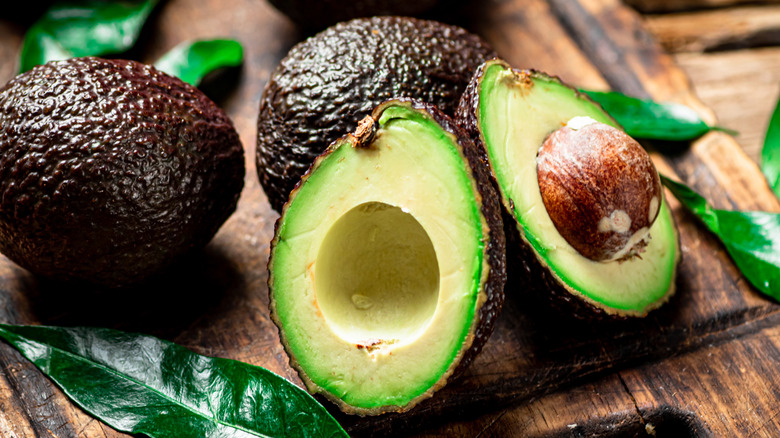Is It Safe To Eat An Avocado That Has Turned Brown?
Whether mashed into a creamy guacamole, sliced over freshly toasted bread, or even made into an ice cream, avocados bring vibrant flavors and nutrients to any dish. But there's one major drawback any avo lover will know ... they're incredibly unpredictable, and it's hard to know when one is perfectly ripe. Sure, there are tricks, like giving it a gentle squeeze to test for softness or popping off the stem to check the color beneath, but the timing can still be tricky. Even when you've finally cut into your avocado at the right moment, you might also notice its green flesh can quickly start to turn brown. But are brown avocados safe to eat? The answer is maybe, as there are a few other signs of freshness you should pay attention to as well.
Browning typically occurs after an avocado has been cut, through a process called oxidation. In simple terms, this happens when the flesh reacts with oxygen in the air, activating enzymes that turn it brown — a similar process to how an apple darkens after being sliced. While it may not look particularly appetizing, slight browning doesn't necessarily mean the avocado has gone bad, especially if the rest of the flesh still looks and smells fine. It's definitely not that aesthetically pleasing, though, so to slow down oxidation, store your leftover avocado in an airtight container to minimize its exposure to air.
Signs you should discard your avocado
Avocados are extremely temperamental, and once they're ready to eat, there's a very narrow window before they start to spoil — although there are several tips to slow down avocado ripening. While browning isn't always a sure sign of spoilage, if it appears alongside other warning signs, it might be time to toss it — or better yet, suspend the pit in water with a few toothpicks to grow a new one!
Prolonged exposure of any food to air can eventually lead to rancidity, which is the same reason why your steak might start to taste a bit fishy when it's been sitting out for too long. Trust your senses, as two of the clearest indications of spoilage are the feel and smell of the avocado, which, in combination with a brown color, are telling signs that it's no longer safe to eat. If it feels overly soft and mushy, it's no longer good. Similarly, a sour or foul odor is a major red flag that the unsaturated fats — which avocados have in truckloads — have begun to break down. In these cases, trust your instincts and toss it.
A little browning is nothing to worry about and can easily be sliced or scraped away to reveal beautiful green flesh beneath. But extreme browning is definitely cause for concern. If it's extensive, or the avocado has turned completely black, rancidity has likely set in, and eating it simply isn't worth the risk.


